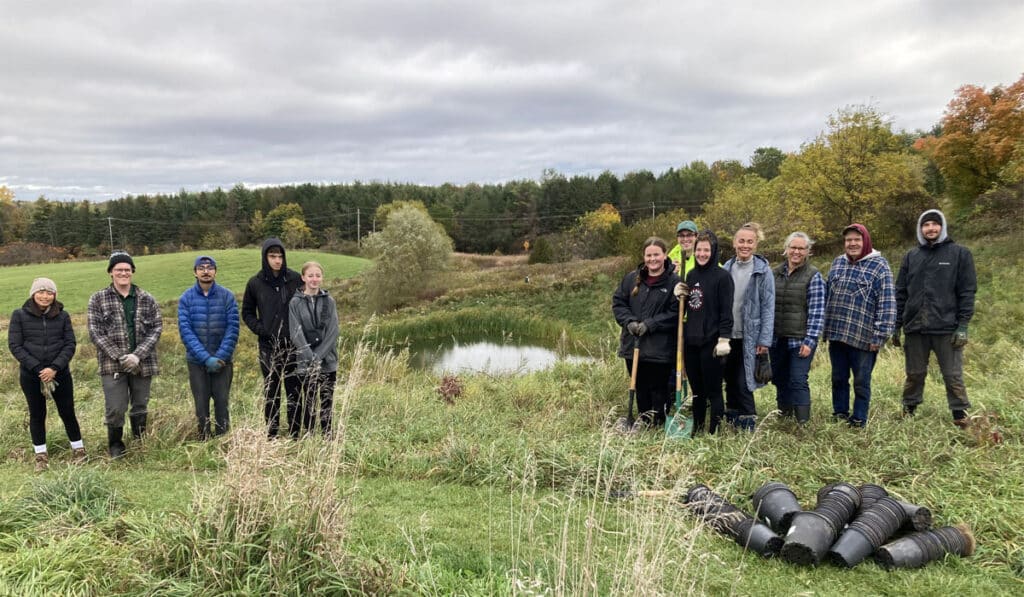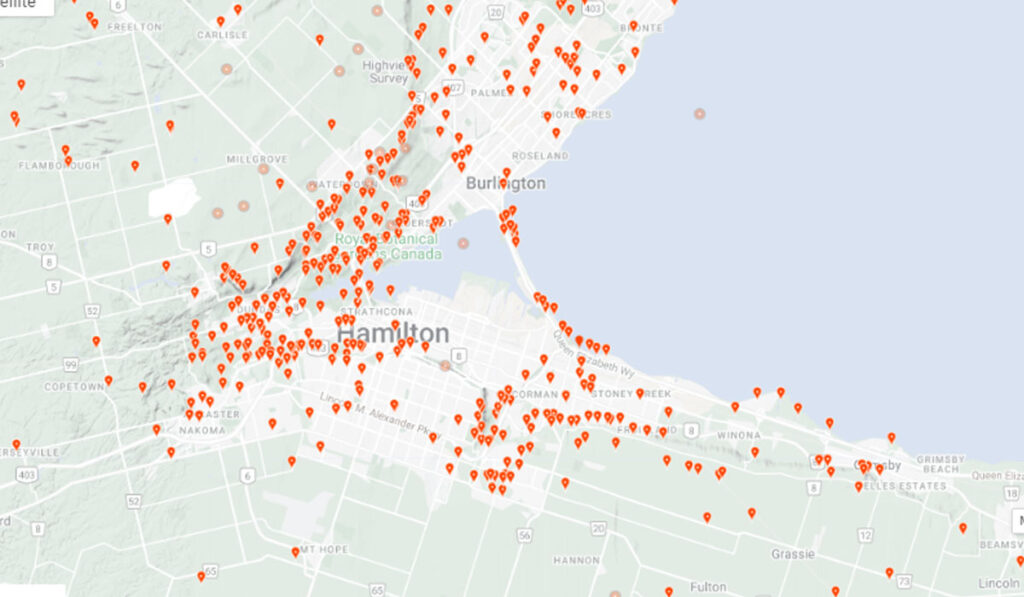Giant hogweed is an invasive plant, likely introduced from Asia as an ornamental garden plant. It is part of the carrot family, and is a perennial (a plant that lives two years or more). If you find Giant hogweed, DO NOT touch it, as the plant poses dangers to humans and animals.
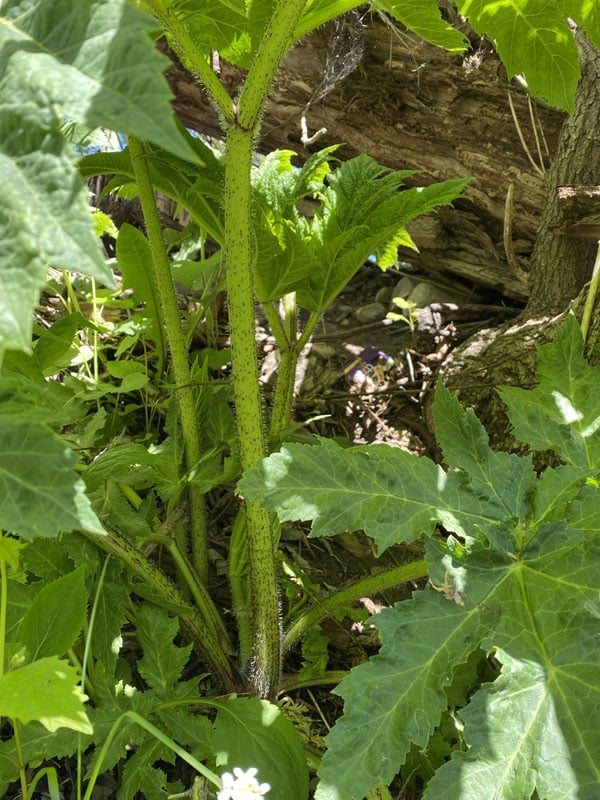 Stem is 5-15cm thick, with prominent purple blotches and course bristly hairs.
Stem is 5-15cm thick, with prominent purple blotches and course bristly hairs.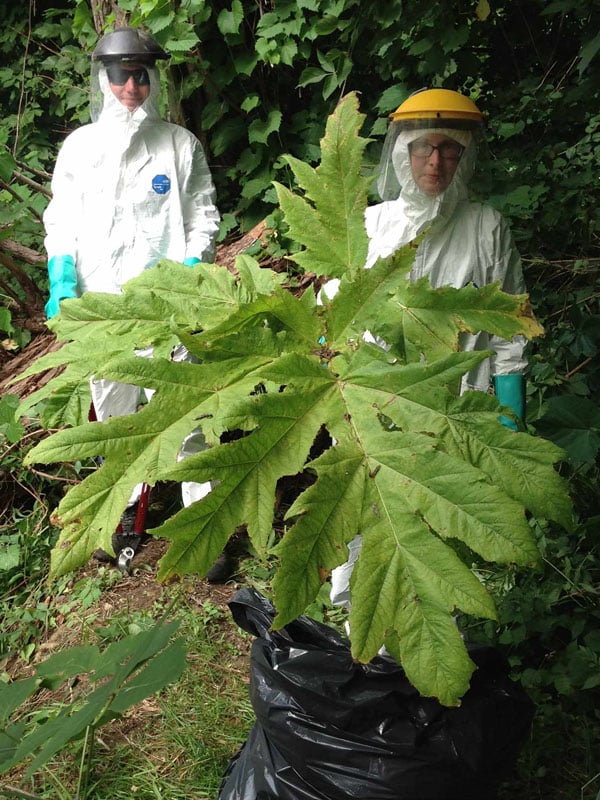 Leaves have prominently spiked edges and are up to 1.5m long.
Leaves have prominently spiked edges and are up to 1.5m long.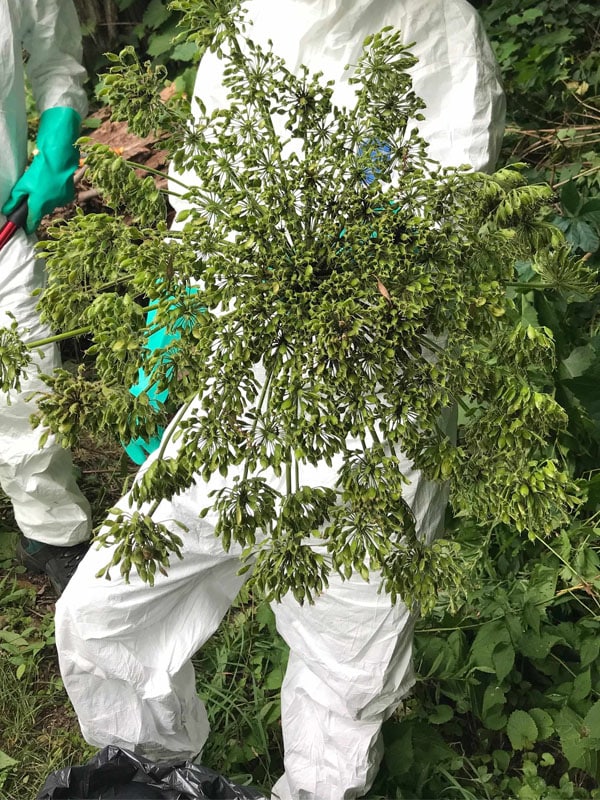 Umbrella like seed pod head. Approx. 30-90cm in diameter.
Umbrella like seed pod head. Approx. 30-90cm in diameter.What does Giant Hogweed look like?
When Giant Hogweed starts out, it has a rosette of leaves and doesn’t flower until the plant is at least two years old. It will only flower once, then die.
Once it is mature, Giant Hogweed really is GIANT, growing to 2.5 to 5m in height. It has large white umbrella shaped flower clusters, that are 30 to 90cm in diameter. The leaves have prominently spiked edges and are up to 1.5m long, with a stem that is 5 to 15cm thick, with prominent purple blotches and course bristly hairs.
What makes it so dangerous?
The plant’s sap is very dangerous to humans and animals. If it makes contact with your skin, and the area is then exposed to sunlight, it can cause severe burns. These burns can even leave scars that can last for years. There have even been reports that it can cause temporary blindness if it gets into your eyes, and can also cause respiratory irritation. Simply put, if you find Giant Hogweed, do not touch it.
Why is it a problem?
In addition to its dangerous qualities, it is also bad for our local natural environment. As with many other invasive species, Giant Hogweed has the ability to out compete native species and can easily spread by wind or water. The single flower head can produce 50,000 to 120,000 seeds. When seeds are spread they can take years to germinate, and can stay viable up to 15 years.
Has it been found in HCA’s watershed?
To date, over 20 stems of Giant Hogweed have been treated in the Lower Spencer Creek. In 2018, a plant was removed from the Spencer Creek Trail in Dundas. In 2021, two new small populations were found along the same trail. One was beginning to flower, but HCA was able to treat the stems in 2021, and retreated new growth in 2022. HCA staff continue to monitor and treat all know populations for any regrowth.
HCA is aware, and working with a handful of private landowners over that last few years in the Spencer Creek Watershed (Middle Spencer Creek and Ancaster Creek Subwatersheds) who collectively have over 60 stems of Giant Hogweed.
There are two native plants, Cow Parsnip and Purple Stemmed Angelica, that are commonly mistaken for Giant Hogweed. Cow Parsnip looks nearly identical, expect for size and stem color/texture.
- Cow Parsnip: native; 1 to 2.5m in height; white umbrella shaped flower clusters; 10 to 30cm in diameter; leaves have fuzzy undersides and are up to 0.5m long; stem is 5cm thick at base, few to no purple spots and soft fuzzy hairs.
- Angelica: native; 1.2 to 2.1m in height; greenish white globe like flower clusters, 8 to 25cm in diameter; solid or purple blotched stem with no hairs.
 Cow Parsnip stem - no purple blotches.
Cow Parsnip stem - no purple blotches.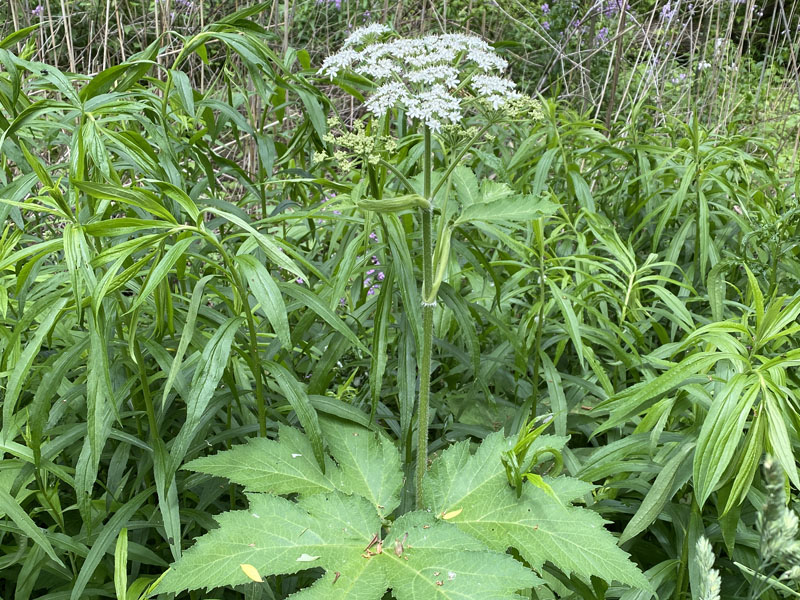 Cow Parsnip plant - much smaller than Giant Hogweed.
Cow Parsnip plant - much smaller than Giant Hogweed.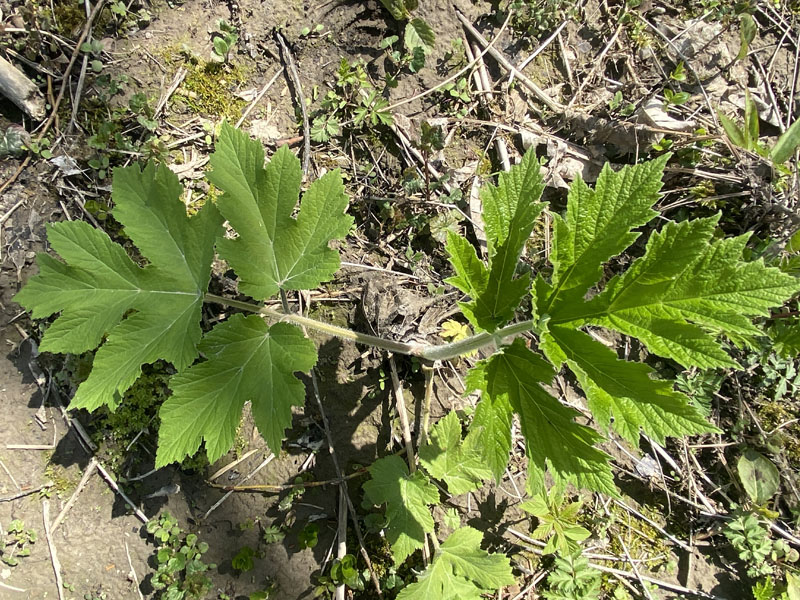 Cow Parsnip
Cow ParsnipAlthough both of the native plants cause less severe skin irritation, they should be left alone. As native plants, they are much more beneficial to the ecosystem than introduced plants like Giant Hogweed, and HCA will leave them if found.
HCA does receive many concerned calls and emails, there is only one confirmed population of Giant Hogweed for 2022.
Is it becoming more common in our area?
In HCA’s experience, it is not becoming more common, but the public is becoming much more aware of the invader.
What to do if you think you’ve found Giant Hogweed?
The process for private and public potential sightings are very similar:
- Take photos – at a safe distance, try to get a photo of the entire plant, ideally with a good shot of the stem.
- Provide a location – street address, Google Map pin or UTM coordinates.
- Contact the HCA or the City of Hamilton and send the photos and location to someone who is able to identify the plant.
Public property: we determine if it’s land managed by the HCA, the City of Hamilton, or another organization and proceed accordingly.
Private property: the landowner is typically responsible for removal. If the landowner lives within our watershed, HCA’s Stewardship department can often provide the landowner with additional resources and arrange for a site visit.
Does HCA remove Giant Hogweed? How?
If Giant Hogweed is on HCA property, staff will remove it if it is safe to do so. Typically, Giant Hogweed is best removed by mechanical means. The flower/seed head will be cut and bagged, along with the rest of the main stem of the plant. The base, or any parts that remain, can be chemically treated (depending on the location), or tarps can be used to block out sunlight and kill the rest of the roots and prevent seeds from sprouting. People performing removal of the plants need to wear full PPE (Personal Protective Equipment); protective suits, rubber gloves, googles or a face shield to avoid contact with the sap.
Additional Resources
Ontario Invasive Plant Council Giant Hogweed Factsheet
Ontario’s Invading Species Awareness Program






